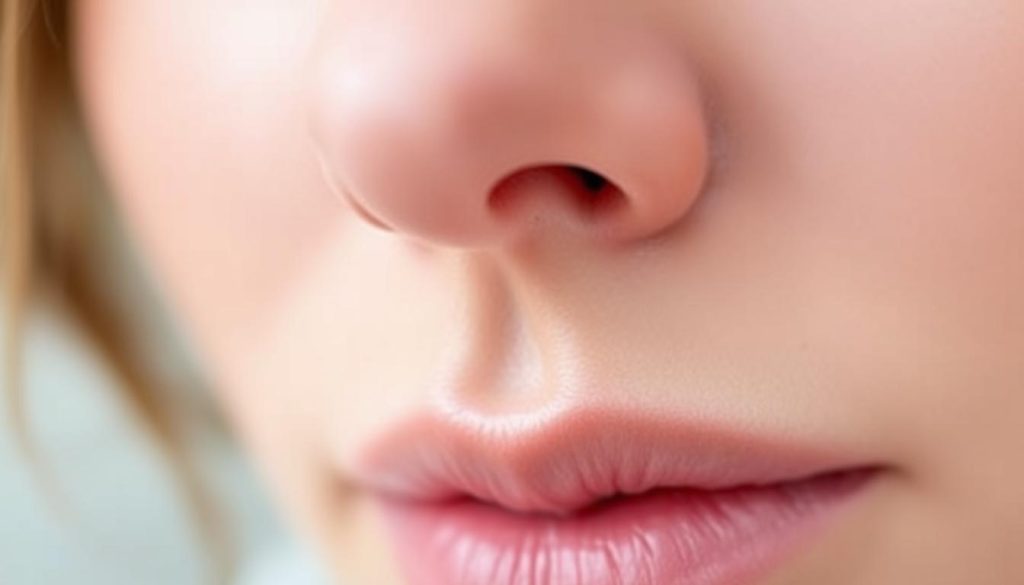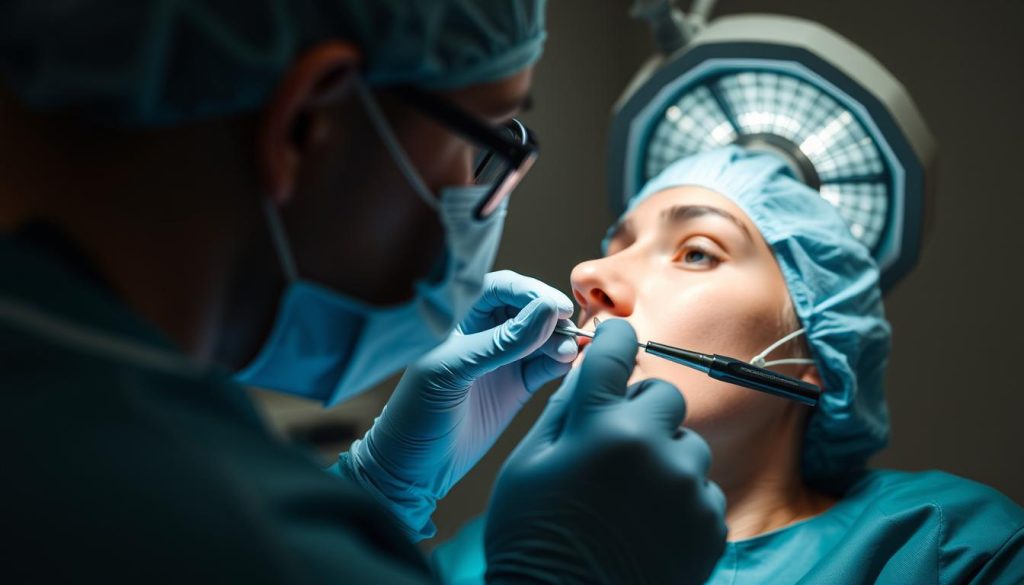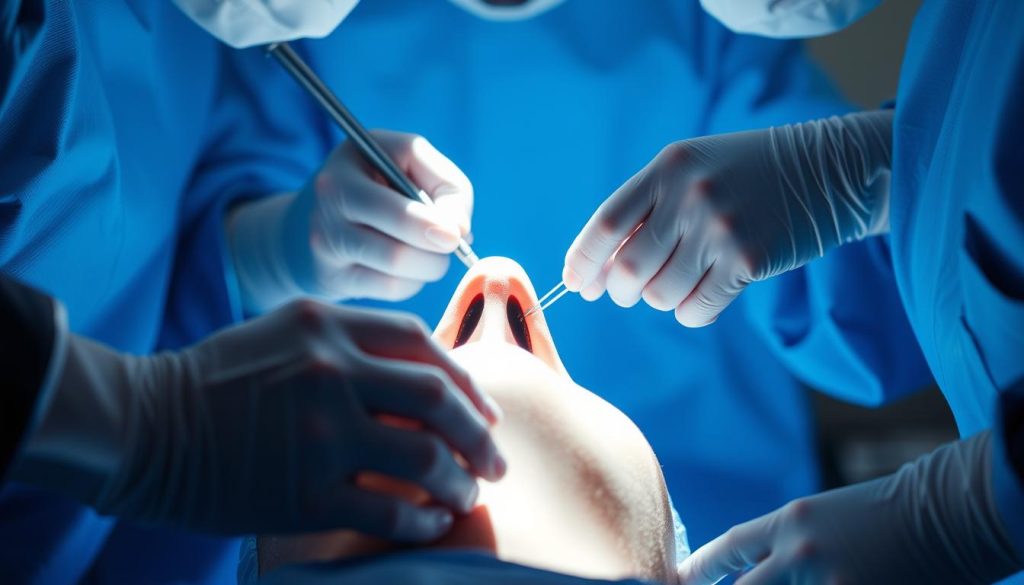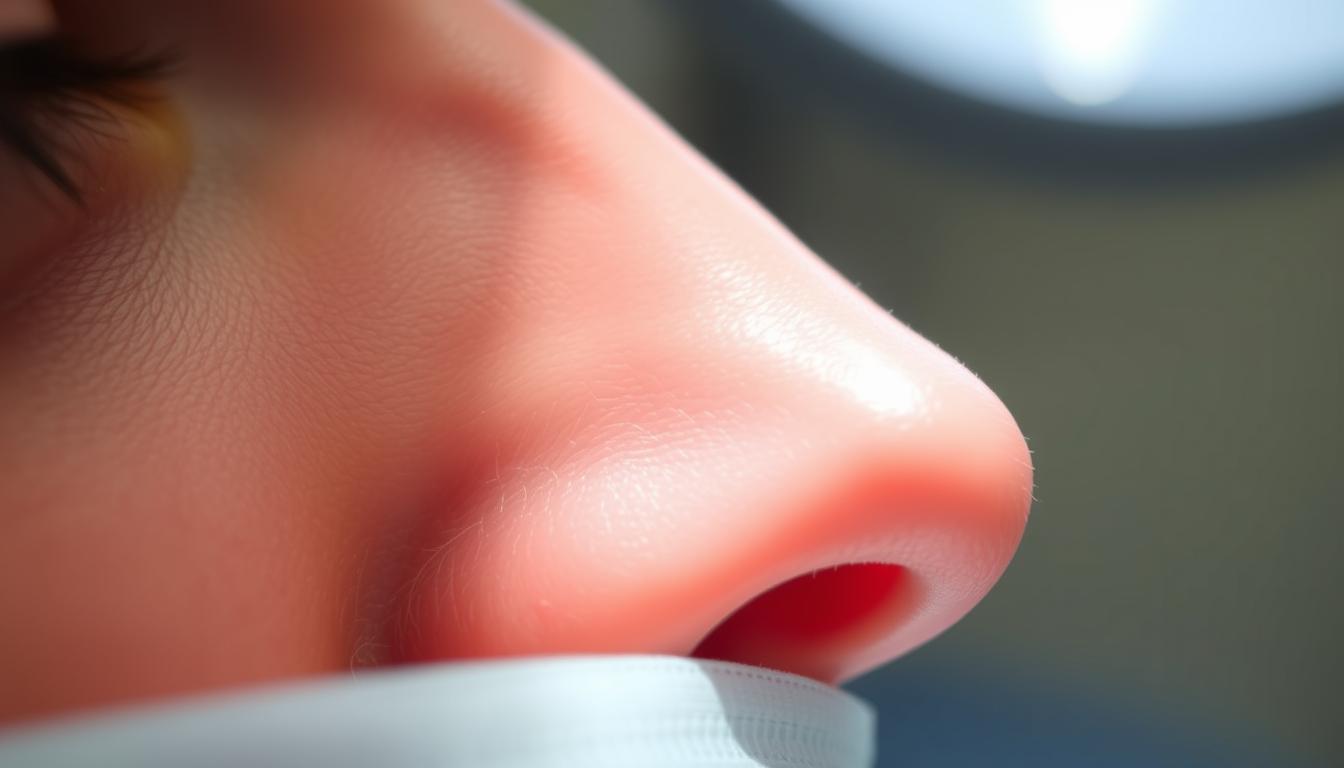Rhinoplasty, commonly known as a nose job, is a surgical procedure that can significantly alter the appearance and function of the nose. Tip surgery in rhinoplasty, or nasal tip refinement, is a specialized approach focusing on reshaping the nose tip without modifying the bony structure. This less invasive procedure addresses various concerns, such as bulbous, droopy, or upturned tips, providing improved facial balance.
By concentrating on the nasal tip, this procedure offers a quicker recovery time compared to full rhinoplasty. Patients can achieve significant aesthetic improvements with modern surgical techniques. Understanding what tip surgery entails helps individuals make informed decisions about their aesthetic goals.
Key Takeaways
- Nasal tip refinement is a specialized rhinoplasty procedure focusing on the nose tip.
- This less invasive surgery addresses concerns like bulbous or droopy tips.
- It offers quicker recovery times compared to full rhinoplasty.
- Modern techniques allow for precise modifications and natural-looking results.
- Patients can achieve improved facial balance and harmony.
Understanding Nasal Tip Surgery
Nasal tip surgery is a specialized form of rhinoplasty that focuses on reshaping the tip of the nose. This procedure is designed for individuals whose primary concern is the appearance of their nasal tip.
What Is Tip Surgery in Rhinoplasty?
Tip surgery in rhinoplasty refers to a surgical procedure that aims to refine or reshape the nasal tip. It is a more targeted approach compared to full rhinoplasty, focusing solely on the tip of the nose. This can involve modifying the shape, size, or orientation of the nasal tip to achieve a more aesthetically pleasing appearance.
Tip Surgery vs. Full Rhinoplasty
The primary distinction between tip surgery and full rhinoplasty lies in the scope of the procedure and the nasal structures being modified. While full rhinoplasty addresses the entire nose, including the bridge, dorsum, septum, and tip, tip rhinoplasty focuses exclusively on the nasal tip. This makes tip surgery a more suitable option for patients whose concerns are limited to this specific area.
The recovery period for tip surgery is typically shorter and less uncomfortable than that of full rhinoplasty due to its less invasive nature. Candidates for tip surgery must have a well-proportioned nasal bridge and good structural support.
Common Aesthetic Concerns Addressed by Tip Surgery
Aesthetic concerns regarding the nasal tip can be effectively addressed through tip surgery, a refined rhinoplasty technique. The nasal tip is a crucial aspect of the nose’s overall appearance, and various aesthetic issues can be corrected through this specialized surgery.
Bulbous Nasal Tip
A bulbous nasal tip can significantly affect the overall appearance of the nose. Tip surgery can refine the nasal tip by reshaping the cartilage, creating a more defined and aesthetically pleasing shape. This procedure involves modifying the lower lateral cartilages to achieve a more refined tip.
Droopy or Upturned Tip
A droopy or upturned nasal tip can disrupt the balance of the nose. Through tip surgery, surgeons can adjust the nasal tip’s angle and projection, achieving a more harmonious and balanced appearance. This is done by modifying the cartilage and sometimes using sutures or grafts to support the tip.
Overprojected Tip
An overprojected nasal tip can make the nose appear larger than it is. Tip surgery can reduce the tip’s projection by reshaping the cartilage and reorienting the nasal tip structures. This results in a more proportionate and aesthetically pleasing nose.
Wide Nostrils
Wide nostrils can create a broader nasal base, which may appear out of proportion with other facial features. Surgeons can effectively reduce the size of the nostrils through alar base reduction, creating a more refined appearance. The procedure involves removing small wedges of tissue at the nostril base.
| Aesthetic Concern | Surgical Solution |
|---|---|
| Bulbous Nasal Tip | Reshaping the lower lateral cartilages |
| Droopy or Upturned Tip | Adjusting the nasal tip’s angle and projection |
| Overprojected Tip | Reducing the tip’s projection by reshaping cartilage |
| Wide Nostrils | Alar base reduction |
Benefits of Choosing Tip Surgery
The decision to undergo tip surgery can lead to a more balanced and proportionate facial appearance. By refining the nasal tip, individuals can achieve significant improvements in their overall facial aesthetics.
Less Invasive Procedure
Tip surgery is often considered a less invasive alternative to full rhinoplasty. This procedure focuses specifically on the nasal tip, reducing the complexity and extent of the surgery. As a result, patients can expect fewer complications and a more straightforward recovery.
Quicker Recovery Time
One of the notable benefits of tip surgery is the quicker recovery time compared to more comprehensive rhinoplasty procedures. Since the surgery is less invasive, the healing process is generally faster, allowing patients to return to their normal activities sooner.
Improved Facial Balance
By creating a more refined nasal tip, tip surgery can significantly enhance facial harmony. The nasal tip plays a crucial role in facial balance, and even subtle refinements can lead to substantial improvements in overall appearance. A well-proportioned nasal tip can draw attention to other facial features, such as the eyes and lips, creating a more balanced look.
| Benefits | Description |
|---|---|
| Less Invasive | Focuses on the nasal tip, reducing complexity and potential complications. |
| Quicker Recovery | Faster healing process due to the less invasive nature of the procedure. |
| Improved Facial Balance | Enhances facial harmony by refining the nasal tip. |

Surgeons carefully analyze facial proportions to ensure that tip modifications enhance overall facial harmony. By addressing concerns such as a droopy or bulbous tip, tip surgery can lead to increased self-confidence and satisfaction with one’s appearance.
Ideal Candidates for Nasal Tip Refinement
Determining the ideal candidate for nasal tip refinement involves a comprehensive evaluation by a specialist surgeon. This assessment is crucial in understanding the patient’s nasal structure, aesthetic goals, and overall suitability for the procedure.
Age Considerations
The age of the patient is a significant factor in determining their suitability for nasal tip refinement. Generally, patients should be at least 16 years old for girls and 17-18 years old for boys, as this allows for the nasal structure to be fully developed. Patients within this age range tend to have better outcomes due to the stability of their nasal cartilage.
Anatomical Requirements
Anatomical requirements play a vital role in the success of nasal tip refinement. The procedure is most suitable for individuals with a nasal tip that is bulbous, droopy, or overly projected. The quality and thickness of the nasal skin and cartilage are also critical factors that the surgeon will assess during the consultation.
| Anatomical Factor | Ideal Characteristics |
|---|---|
| Nasal Skin | Moderate thickness, good elasticity |
| Nasal Cartilage | Strong, yet pliable |
| Nasal Tip Shape | Bulbous, droopy, or overly projected |
Realistic Expectations
Having realistic expectations about the outcomes of tip rhinoplasty is crucial for patient satisfaction. Ideal candidates understand that while tip surgery can create significant improvements, it cannot deliver perfection or completely transform their appearance. During the consultation, the surgeon will use various tools, including computer imaging, to help patients visualize potential outcomes.
The Consultation Process
Understanding the consultation process is vital for patients considering nasal tip surgery, as it sets the stage for a successful outcome. During this initial meeting, the surgeon will assess the nasal structure and discuss the patient’s expectations.
What to Discuss With Your Surgeon
It’s essential for patients to openly discuss their concerns and desired appearance with their surgeon during the consultation. This dialogue helps the surgeon understand the patient’s goals and create a personalized plan.
- Share concerns about the nasal tip’s appearance.
- Discuss the desired outcome and results.
Visualization and Planning
Modern visualization techniques play a crucial role in the planning process for tip rhinoplasty. Surgeons use various tools, including computer imaging software and 3D imaging technology, to help patients visualize potential results.
- Standardized photographs are taken from multiple angles.
- Computer imaging software creates visual approximations of potential outcomes.
- 3D imaging technology provides comprehensive visualization.
At Kensington Medical, a second consultation is recommended to ensure both the patient and surgeon are comfortable with the planned results.
Tip Surgery Techniques and Procedures

Tip surgery, a crucial aspect of rhinoplasty, employs several techniques to achieve the desired nasal tip aesthetics. The goal is to refine the tip while maintaining or improving nasal function.
Open vs. Closed Approaches
The choice between an open or closed approach depends on the complexity of the procedure and the surgeon‘s preference. An open approach provides more visibility and access to the nasal structures, while a closed approach is less invasive.
Cartilage Modification Methods
Cartilage modification is critical in tip surgery. Techniques include reshaping or removing cartilage to achieve the desired tip definition and appearance.
Suturing Techniques
Suturing techniques have revolutionized tip rhinoplasty. Methods include:
– Interdomal sutures to narrow a wide or bulbous tip.
– Transdomal sutures to reshape individual tip cartilages.
– Lateral crural spanning sutures to control convexity or concavity.
– Tongue-in-groove suture techniques to adjust tip rotation and projection.
These techniques allow for more predictable results with less reliance on cartilage removal, reducing long-term complications.
The Surgical Experience
The surgical experience for rhinoplasty, particularly for nasal tip refinement, involves several key aspects that patients should be aware of. This includes the type of anesthesia used, the duration of the procedure, and the steps involved during surgery.
Anesthesia Options
Nasal tip surgery can be performed under local or general anesthesia, depending on the complexity of the procedure and the patient’s preference. Local anesthesia numbs the nasal area, while general anesthesia ensures the patient is completely asleep during the surgery.
Duration of the Procedure
The duration of nasal tip surgery typically ranges from one to two hours, depending on the extent of the modifications required. The surgeon’s experience plays a significant role in the efficiency and effectiveness of the procedure.
What Happens During Surgery
During the surgery, the surgeon follows a meticulous process to achieve the desired outcome. The steps involved include administering anesthesia, preparing the surgical site, making precise incisions, modifying the cartilage, and closing the incisions.
- The surgical process begins with the administration of anesthesia, followed by careful preparation of the surgical site.
- The surgeon then makes incisions, either across the columella for an open approach or inside the nostrils for a closed approach.
- The cartilage is then modified using techniques such as trimming, suturing, and grafting.
- Throughout the procedure, the surgeon assesses the results from multiple angles to ensure symmetry and the desired aesthetic outcome.
At Kensington Medical, the surgeons have vast experience in performing rhinoplasty surgeries, having held substantive posts in NHS plastic surgery trauma units. They have carried out hundreds of rhinoplasties, ensuring a high level of expertise.
| Surgical Approach | Incision Location | Techniques Used |
|---|---|---|
| Open | Across the columella | Trimming, suturing, grafting |
| Closed | Inside the nostrils | Trimming, suturing, grafting |

“The key to a successful rhinoplasty surgery lies in the surgeon’s ability to balance aesthetic goals with functional considerations.” – Expert in Plastic Surgery
Recovery and Aftercare Following Tip Surgery
Following tip surgery, the road to recovery involves managing swelling, bruising, and adhering to post-operative care instructions. This period is crucial for achieving the desired outcome and minimizing potential complications.
Immediate Post-Operative Care
Immediately after tip surgery, patients are given specific instructions to follow for post-operative care. This typically includes keeping the head elevated, applying ice packs to reduce swelling, and avoiding strenuous activities. Proper care during this initial phase is vital for a smooth recovery.
Managing Swelling and Bruising
Managing swelling and bruising is a key aspect of the recovery process. The use of cold compresses and prescribed medications can help alleviate these symptoms. It’s essential for patients to understand that swelling will gradually subside over time, revealing the final results of the surgery.
| Timeline | Swelling Resolution | Visible Results |
|---|---|---|
| 5-7 days | Initial swelling | Basic shape visible |
| 2-3 weeks | 50-60% resolved | Better indication of nasal tip shape |
| 6-8 weeks | 75-80% resolved | Refined appearance |
Timeline for Seeing Results
The final results of tip surgery become apparent as swelling continues to diminish. Patients should be patient and follow their surgeon’s guidance throughout the recovery period. Regular follow-up appointments are crucial for monitoring the healing process and addressing any concerns.
By understanding the recovery and aftercare process, patients can better navigate their journey to achieving the desired nasal tip refinement. It’s a process that requires patience, but the end result can be highly rewarding.
Potential Risks and Complications
Understanding the potential complications of nasal tip surgery is crucial for informed decision-making. While tip surgery is generally considered safe, there are risks associated with the procedure.
Surgical Risks
Surgical risks associated with nasal tip refinement include infection, bleeding, and adverse reactions to anesthesia. Proper post-operative care can minimize these risks. Patients should follow their surgeon’s instructions carefully to reduce the likelihood of complications.
Aesthetic Complications
Aesthetic concerns can arise if the tip surgery does not meet the patient’s expectations. Asymmetry or an unnatural appearance of the nasal tip are potential aesthetic complications. Choosing a skilled surgeon can mitigate these risks.
Impact on Nasal Function
Nasal tip surgery can potentially impact nasal function if not performed with attention to functional anatomy. The external nasal valve, supported by the lower lateral cartilages, plays a crucial role in breathing. Modern surgical techniques emphasize preserving the nasal valve to maintain normal breathing and nasal function
Patients with pre-existing breathing difficulties should undergo thorough assessment before surgery. Surgeons must balance aesthetic desires with functional requirements, sometimes using grafts to reinforce the nasal tip while refining its appearance.
Choosing the Right Surgeon for Your Tip Surgery

Choosing a skilled surgeon is vital for a safe and effective tip rhinoplasty procedure. The right surgeon will have extensive experience in rhinoplasty and a deep understanding of the complexities involved in tip rhinoplasty.
When selecting a surgeon, consider the following key factors:
- Board certification in plastic surgery or facial plastic surgery.
- Specialization in rhinoplasty procedures, with a high volume of surgeries performed annually.
- Experience with tip rhinoplasty techniques and a portfolio of successful outcomes.
- Positive patients reviews and testimonials.
- A commitment to understanding your goals and providing personalized care.
By choosing a qualified surgeon, you can ensure a successful surgery and achieve your desired aesthetic results.
FAQ
What is the difference between nasal tip rhinoplasty and full rhinoplasty?
Nasal tip rhinoplasty is a less invasive procedure that focuses on refining the nasal tip, whereas full rhinoplasty involves reshaping the entire nose, including the bridge and nasal tip.
How long is the recovery time after nasal tip refinement?
The recovery time for nasal tip refinement is generally shorter compared to full rhinoplasty, with most patients able to return to their normal activities within a week to ten days.
Will nasal tip surgery affect my breathing?
When performed by an experienced surgeon, nasal tip surgery should not negatively impact nasal function or breathing. In some cases, it may even improve breathing by correcting nasal obstructions.
What are the cartilage modification methods used in tip surgery?
Cartilage modification methods used in tip surgery include resection, repositioning, and suturing of the cartilage to achieve the desired shape and projection.
Can nasal tip rhinoplasty be performed under local anesthesia?
Yes, nasal tip rhinoplasty can be performed under local anesthesia with sedation or general anesthesia, depending on the complexity of the procedure and the patient’s preference.
How long does it take to see the final results of nasal tip surgery?
The final results of nasal tip surgery may take several months to a year or more to become fully apparent, as swelling subsides and the nasal tissues settle.
What are the potential risks associated with nasal tip surgery?
Potential risks associated with nasal tip surgery include infection, bleeding, scarring, and asymmetry, as well as complications related to anesthesia.
Can I undergo nasal tip refinement if I have a bulbous nasal tip?
Yes, nasal tip refinement can be an effective solution for individuals with a bulbous nasal tip, as it allows for the reshaping of the nasal tip to achieve a more refined appearance.
